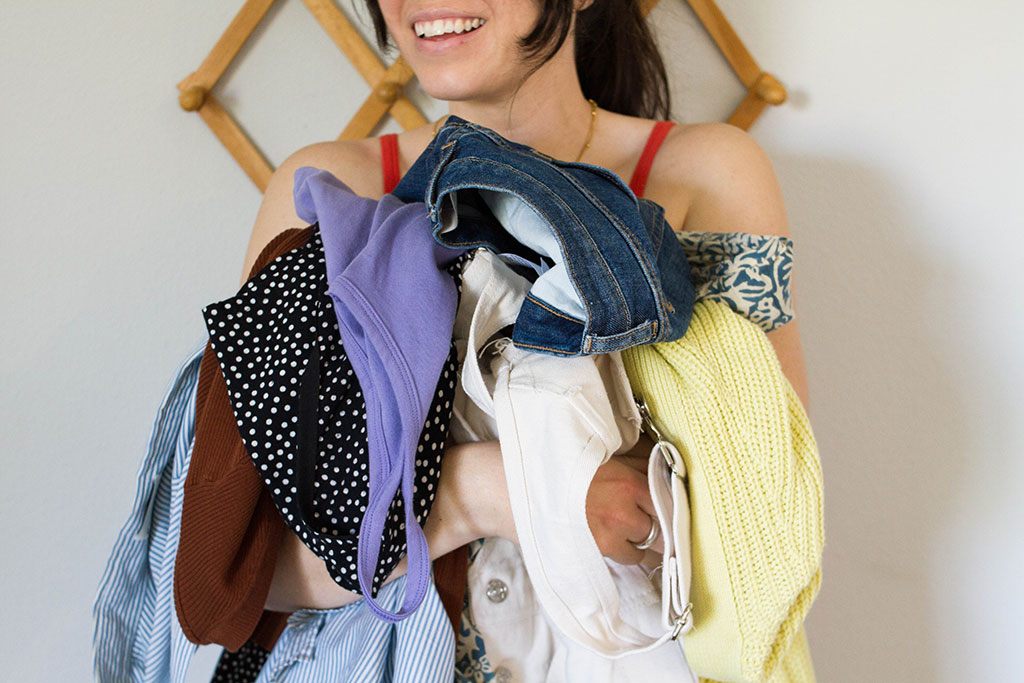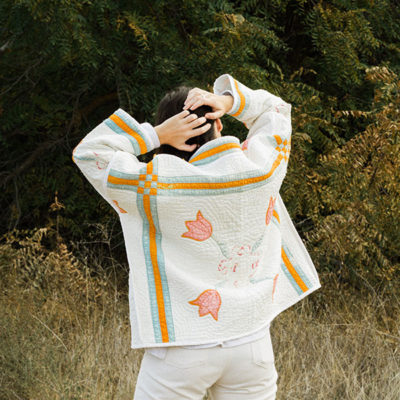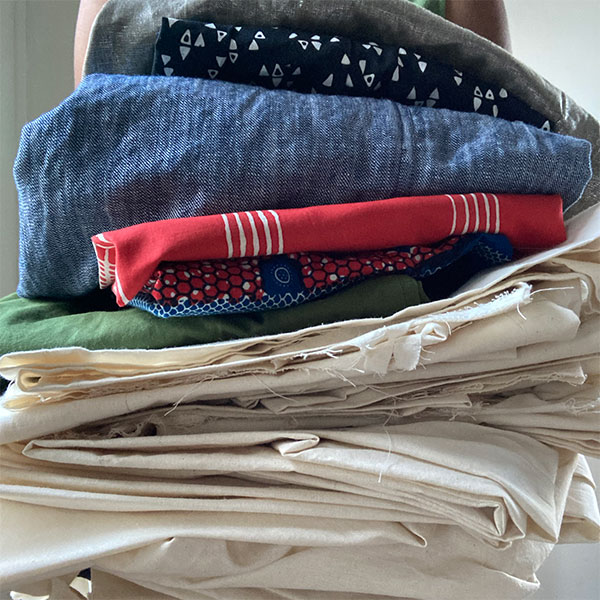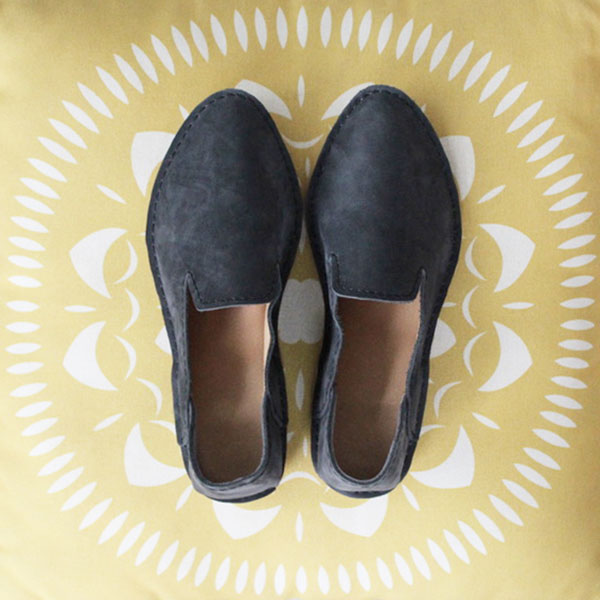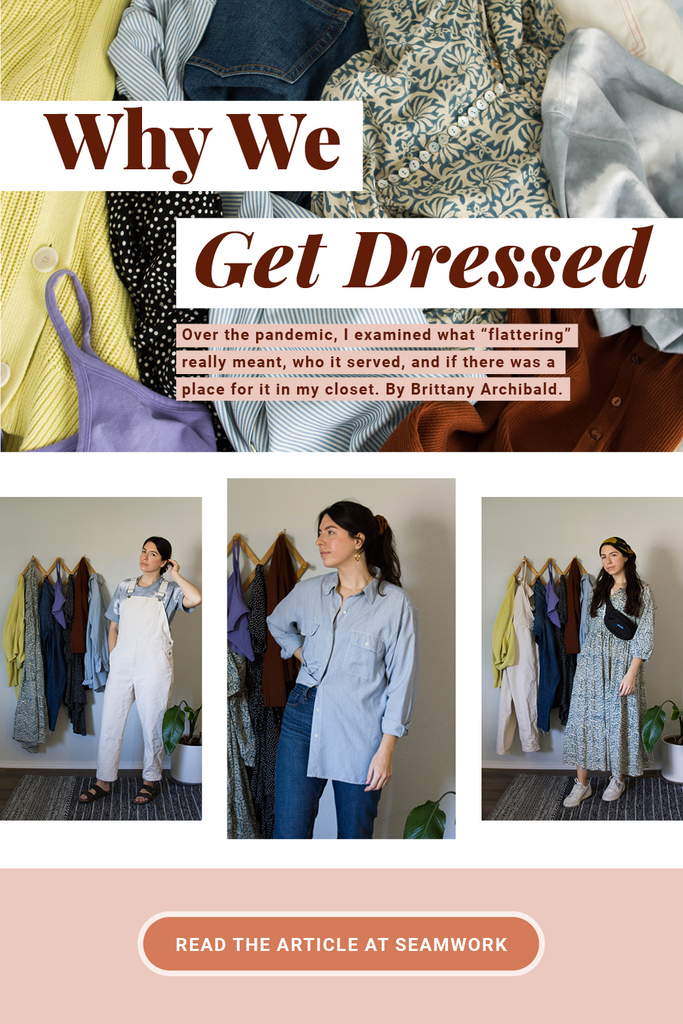I love clothes. I love wearing clothes, touching clothes, making clothes. I love the experience of putting together an outfit, an exercise that is at once tactile and cerebral—how do I want to feel today? Who do I want to be? I love seeing how other people build outfits, the privilege of witnessing a snapshot of another person’s creative voice, the delight of an unexpected combination. Clothes are my hobby, and I’m not embarrassed to say it. After years of focused effort, my closet is an eclectic mix of me-made, thrifted, and slow fashion gems that beg to be shown off, to be seen.
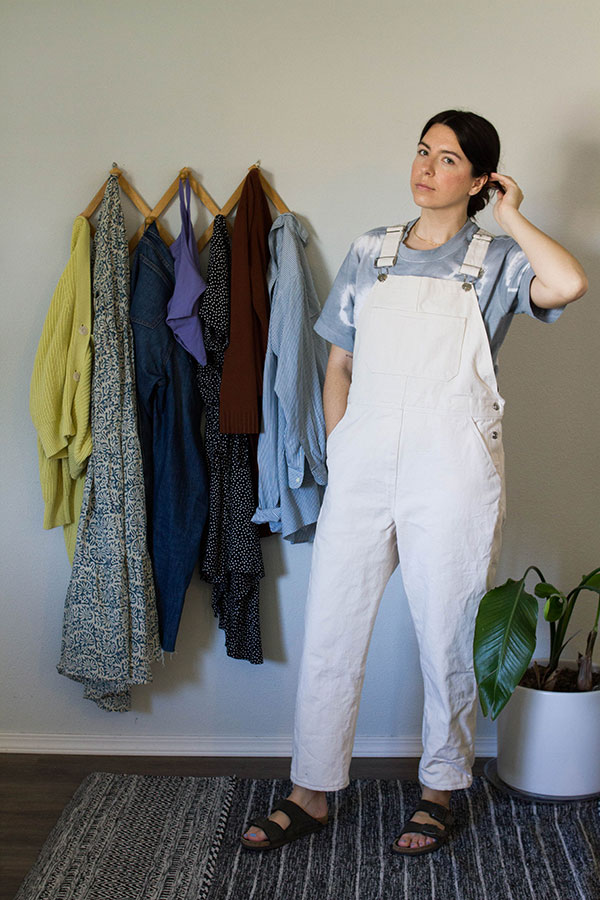
Like many of us, both my clothing needs and my body have changed through this pandemic year—I have the undeserved privilege of working from home, eliminating my need for a huge portion of my clothes. My beautiful, rigid, me-made high-waisted pants, my thrifted vintage wool sweaters, even a few pairs of my less comfortable shoes—all gathering dust in drawers and closets. Beyond that, my body is not the same as it was a year ago. It is thicker, softer, and just different. This is neither good nor bad. Being in my new body combined with spending a year in the vacuum of my house made me realize just how uncomfortable so many of my favorite clothes are, and, in removing those clothes from other people’s positive feedback, they became drained of joy.
Within the first couple months of lockdown, I stalled out on all of my sewing plans, unmotivated to finish projects that I knew I’d never wear around the house. With nowhere to go and no one to see, I struggled to envision daily outfits. I found myself dreading getting dressed every day, weighed down by the knowledge that the garments I had considered most “flattering” were often the least comfortable. Getting dressed became a chore and an obligation.
I began to examine what “flattering” really meant, who it served, and if there was a place for it in my closet. Flattering often means that a person’s body becomes part of the fashion, as important to the outfit as any garment or accessory. It commodifies the body as another fashion item, literally turning a person into an object that is subject to aesthetic critique. In the past, I found myself making and buying clothes for some aspirational future me, one who was more glamorous, more tolerant of restrictive clothing, and—yes—one who was thinner. But instead of elevating me into a better version of myself, this attitude mostly caused me feelings of inadequacy, unable to embody this fictionalized future version of myself.
Now, a year later, I find myself asking why do we get dressed? How had something I once found so satisfying become an endless and exhausting chore?
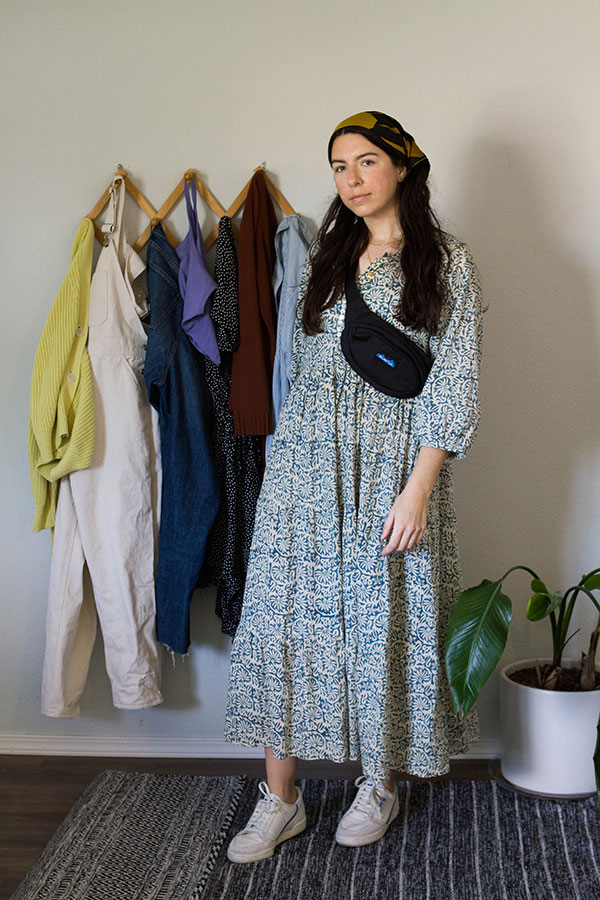
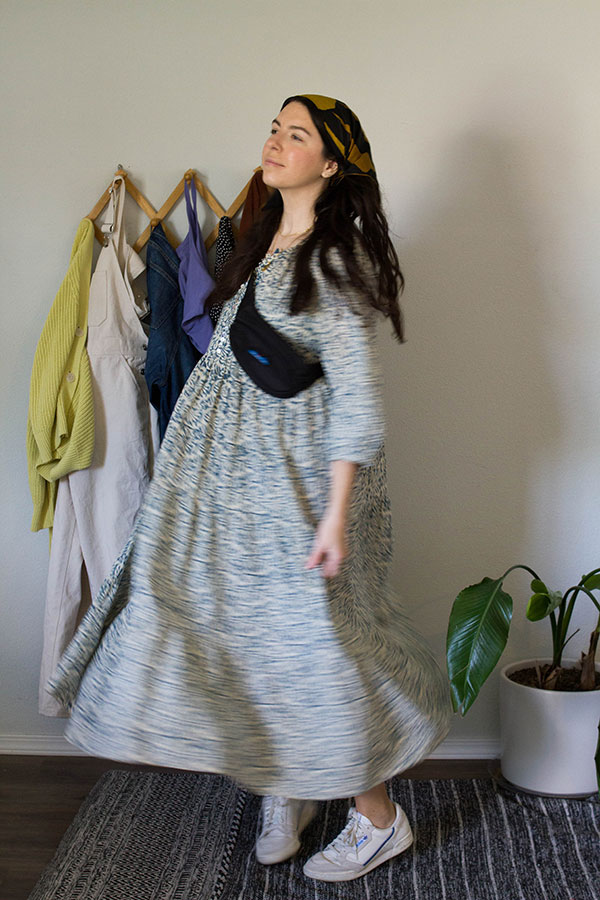
Flattering often means that a person’s body becomes part of the fashion, as important to the outfit as any garment or accessory. It commodifies the body as another fashion item, literally turning a person into an object that is subject to aesthetic critique.
It took a pandemic for me to understand what motivated me to get dressed, and I was not happy with what I found. Elizabeth Way, assistant curator of costume at MFIT, asserts, “Clothes become fashion when people [...] start dressing for a knowledgeable audience, even if that’s just themselves.” I was wearing clothes for myself, yes, but also for an externalized audience. My perception of that audience’s opinion held significant sway over my clothing choices, more even than my own comfort and joy.
Understanding this influence was like a dawn breaking in my pandemic clothing slump, and it became my goal to consider myself, my own joy, as the primary driver of my daily outfit choices.
Clothes can be the lens through which we see ourselves, and it’s a lens we so often forget we can control. It wasn’t until I woke up one day and asked myself, frustrated, “If I could wear anything, what would I wear today?” that I began seeing myself not as an improvement project but as a whole and complete being existing in the here and now. A self who deserved to feel the pleasure of a well-considered and comfortable outfit. Something unique but easy, comfortable but deliberate. My answer? My first pair of me-made overalls.
This pandemic year has been about finding for myself what I actually like to wear—what colors, what textures, what silhouettes—what feels most like me, now. How does this garment look, but also how does this garment feel on my body? How does it feel in my mind?
Dressing as a means to make my body appear a certain way, that’s boring. Dressing as an exploration of aesthetic ideas, adding my voice to the call and response of visual fashion dialogue, that’s interesting. With deliberation, I’ve swapped flattering for interesting in my wardrobe lexicon. I have rediscovered joy in the colors, the textures, the novel combinations, not in how my body fits within them.
This body is your home. You live here. Make it a comfortable place. Our clothes are meant to serve our bodies, not the other way around.
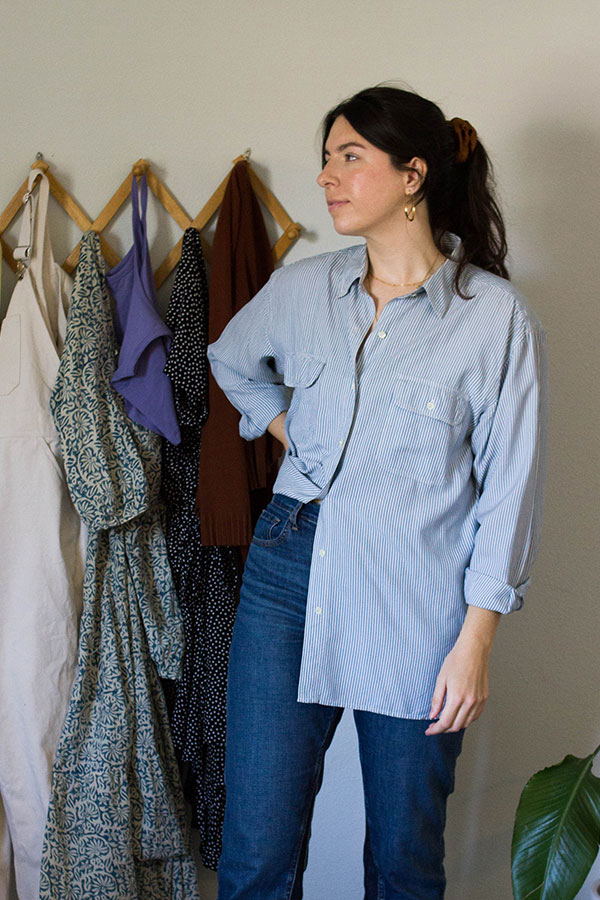
Our bodies are malleable, changeable things, with unique, individual needs; our wardrobe should honor that nature. If clothing is uncomfortable to the point of distraction, it’s not doing its job. This body is your home. You live here. Make it a comfortable place. Our clothes are meant to serve our bodies, not the other way around. Building a wardrobe is a slow, introspective process. Gather around you pieces that spark excitement, that are a pleasure to wear.
I’ve long been a member of the If It Zips, It Fits club, and I knew I had truly transcended my old thought processes when—for what is maybe the first time in my entire adult life—I sized up in a pair of ready-to-wear jeans, even though the smaller size technically fit. The jeans are comfortable, and they are beautiful, and as my own primary audience, I get a little thrill every time I put them on. This mental shift has given me the confidence to reach for more unusual and exciting pieces, and it has empowered me to say no to discomfort for the sake of aesthetics. I’ll take interesting over flattering any day.
